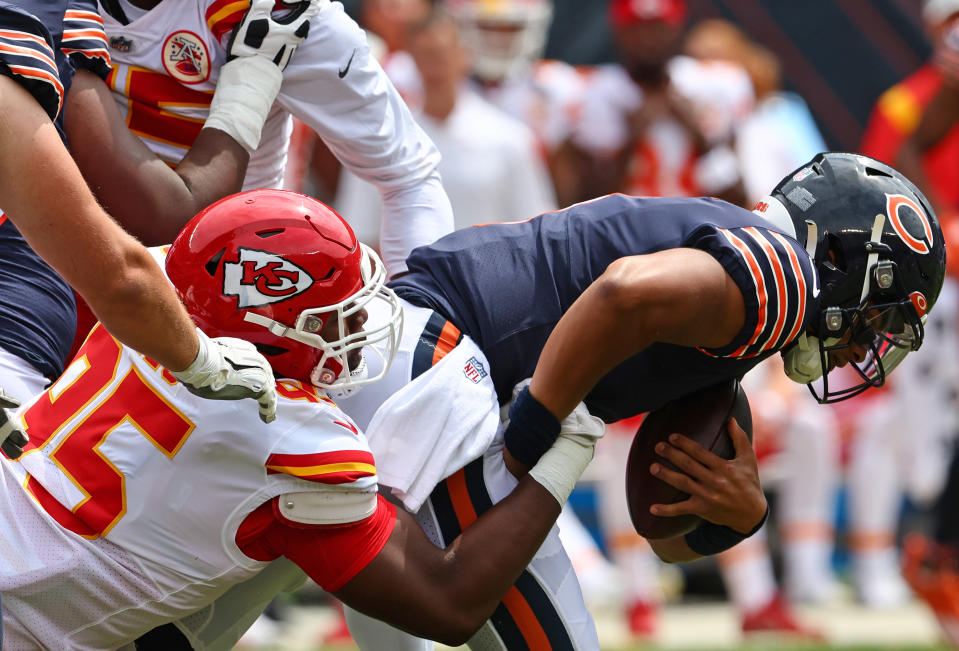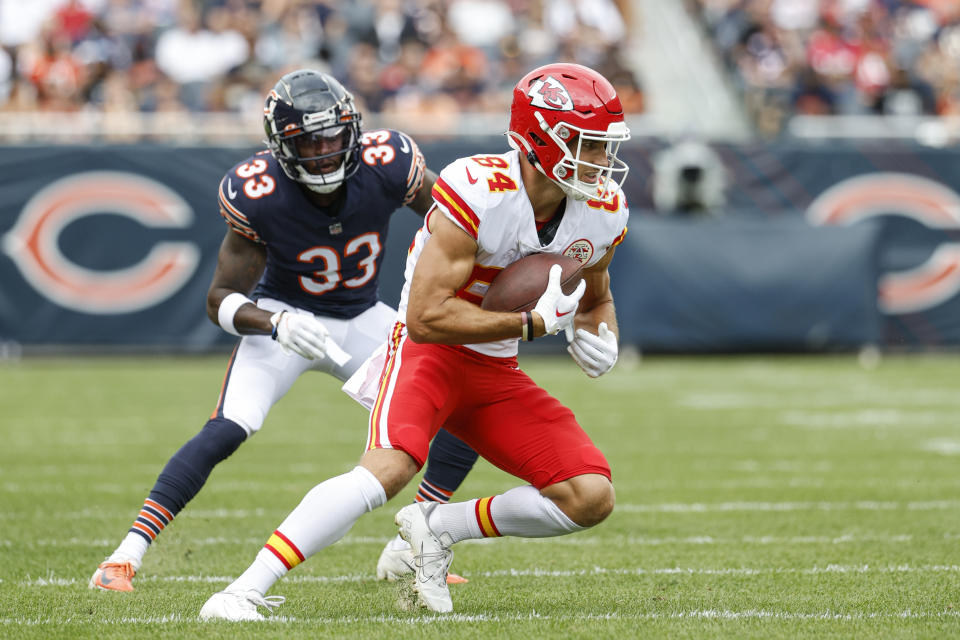How the Chiefs should gameplan for Week 3 vs. Bears

The Chiefs return home for Week 3 to host the Chicago Bears at Arrowhead Stadium.
Kansas City got on the winning track last week, beating the Jacksonville Jaguars to move to 1-1 on the season. The offense continued with its struggles from Week 1 but made plays when it mattered the most. The Chiefs’ defense has carried the load so far and managed to keep the Jaguars out of the endzone last week. The unit has allowed just 23 points so far this season.
The 0-2 Bears haven’t lived up to their offseason hype, losing both of their games by double digits. Quarterback Justin Fields is still struggling as a passer and Chicago’s offense has turned the ball over multiple times in each game. The Bears’ defense has allowed the fourth most points in the NFL so far.
Check out our offseason report on Chicago, where you’ll find information about their offseason moves and key players. Now, let’s see what it will take for the Chiefs to move to a winning record and defeat the Bears.
Chiefs' defense vs. Bears' offense

Matt Eberflus is in his second year as Chicago’s head coach, as is offensive coordinator Luke Getsy. The base of their offense is a zone rushing attack with West Coast passing concepts. They rely heavily on the running game and short, high-percentage passes to set up potentially explosive plays downfield.
The Bears’ offense spends a lot of time in spread formations with Fields in shotgun, with the goal of spreading out the defense and creating one-on-one mismatches. RPOs (run-pass options) are a staple of Chicago’s spread offense with the speedy Fields. Last season Fields rushed for the second most yards by a quarterback in NFL history with 1,143.
Unfortunately for the Bears, they rely too much on Fields’ rushing ability, making them one-dimensional. Although he has a strong arm, Fields is not even an average passer at this stage of his career. The short passing game hasn’t been effective because he’s not a threat to stretch the field.
Defenses are playing close to the line of scrimmage, stifling the running game and keeping Fields under constant duress. The Chiefs should do the same, and with how well their front seven has been playing they shouldn’t have to blitz extra defenders very often. Getting pressure and having success against the run with just four or five guys should lead to turnovers.
Chiefs' offense vs. Bears' defense

Bears’ defensive coordinator Alan Williams suddenly resigned on Wednesday. Eberflus will now take on more responsibility with the defense, including calling plays. He is a former defensive coordinator and Williams basically ran Eberflus’ scheme, so there shouldn’t be many changes.
Eberflus runs a 4-3 Tampa 2 system. In a Tampa 2 defense, the middle linebacker drops deeper into coverage than he would in a traditional Cover 2, allowing the safeties to play with a little more width.
Despite beefing up their front seven in the offseason by bringing in linebackers T.J. Edwards and Tremaine Edmunds as well as defensive end DeMarcus Walker, the Bears’ defense hasn’t shown much improvement through two weeks. It has surrendered the fourth most total yardage in the league and has yet to record a takeaway.
The Chiefs’ offense has also had its struggles. Its young wide receiver corps has struggled with route running and consistently getting open and the lack of chemistry with quarterback Patrick Mahomes is clear. One silver lining is that the running game got going last week, specifically with Isiah Pacheco, who averaged 5.8 yards per carry.
The Bears allowed 92 rushing yards in Week 1 and 120 in Week 2. Getting Pacheco in a rhythm early and controlling the line of scrimmage could open things up for Mahomes and the passing game. Having early success against a Bears’ defense that is struggling with confidence could help get the K.C. offense finally firing on all cylinders.

